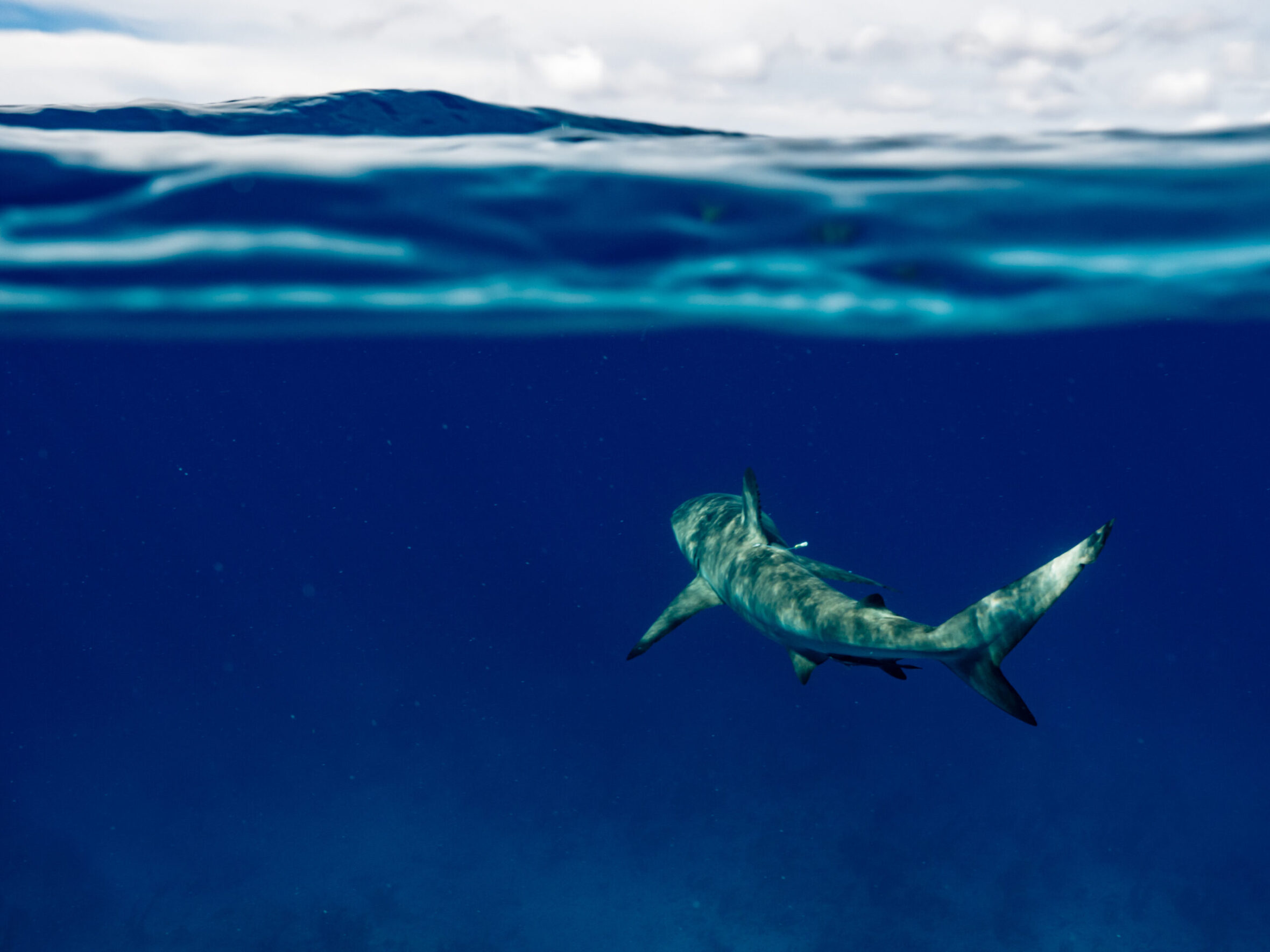
New Publication From Beneath The Waves
The latest study from Senior Research Scientist Dr. Oliver Shipley, “Energetic consequences of resource use diversity in a marine carnivore,” was released last month in Oecologia. Blog contributor Alex Butler summarizes the study for us here–dive in!
We have likely all heard the phrase, “You are what you eat”. The idea is that the food we consume will affect how we perform and go about our daily life. It turns out that the same holds true for sharks. Our team set out to the Great South Bay in New York to study how the diet of juvenile sand tiger sharks can affect their energy and potentially their reproductive fitness.
Sand tigers, sometimes known as the ragged-tooth shark, are known for their protruding ‘snaggle teeth’, and are frequently found in shallow bays such as the Great South Bay, which is a nursery for this species. Because of their prevalence, not only in this area but in most of the world’s oceans, the sand tiger was the chosen species for this study.
The energy of any animal is essentially determined by the nutritional quality of its prey. Like humans, if the quality of the food is higher, in theory, we will have higher energy levels. Higher energy can lead to better chances of reproduction, or fitness. It is thought that many species, including the sand tiger shark, will seek out the most nutritious prey to enhance their fitness, and therefore the chances of their species’ survival. The ability of prey to potentially determine the survival of a species made this a particularly important study, especially given that many ecosystems are changing from human impacts like overfishing and climate change.
The scientists discovered that young sand tigers primarily rely on two categories of prey. The first is pelagic foragers like butterfish or scup, who feed on planktonic primary producers that photosynthesize for energy. The other significant prey category included animals like flounder, squid, or sea robins which have planktonic and bottom-dwelling food sources; this category is considered demersal omnivores. The team concluded that individual sand tigers that mainly used pelagic foragers as a source of prey showed qualities of having higher energy than sharks that mainly ate demersal omnivores.
So How Did They Do It?
The researchers started out in the field where they caught 64 juvenile sand tiger sharks by rod and reel fishing. Most of these sharks were around four feet long. Once caught, they took blood samples from each shark before safely releasing them. Back in the lab, they used the blood samples to look at levels of blood plasma lipids, which would provide insight into the sharks’ energetic condition. The nutritional quality of the sand tiger’s prey was determined by a method called stable isotope analysis, which traces chemical signatures in tissues and can show how nutrients flow through the food web. In this case, the team focused the analysis on carbon and nitrogen in the tissues of prey that were caught in a 2015 trawl. Watch the video below to see how we use stable isotopes in other research projects.
Next Steps
With climate change and overfishing becoming an increasing problem, it is critical to understand how sharks rely on and are affected by their prey. We have shown here that nutritional food sources may increase the chances of reproduction, but the research efforts don’t stop here. More must be done to fully understand how human impacts might affect sand tigers and other shark species.
Read the full paper here: https://link.springer.com/article/10.1007/s00442-022-05241-5
Edited by Alex Butler.










